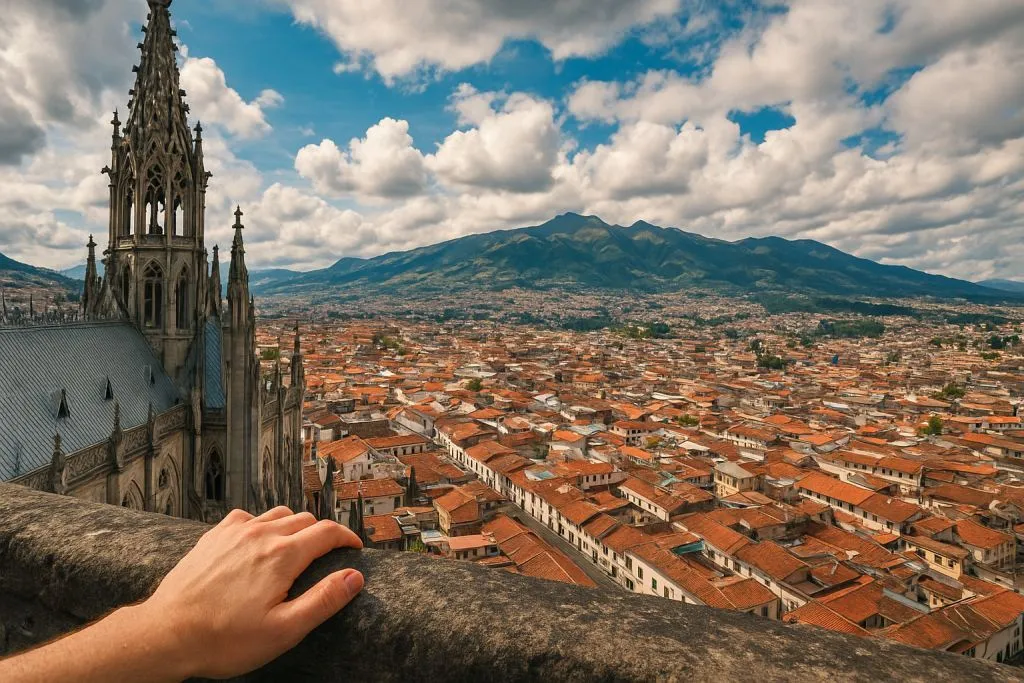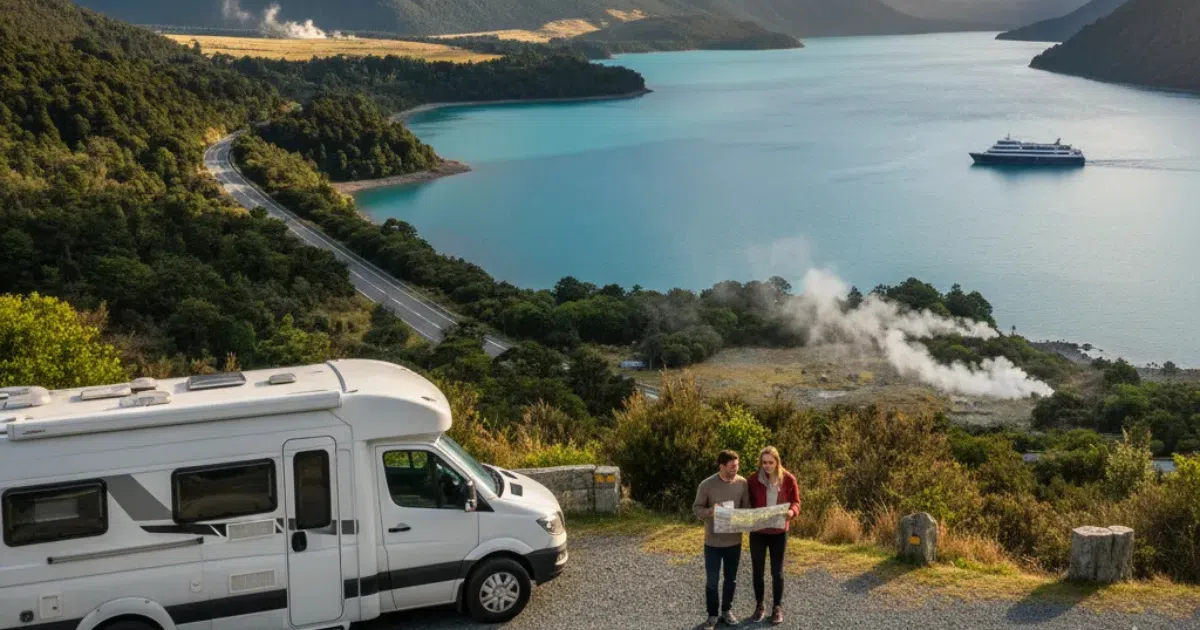Quito, Ecuador’s high-altitude capital, is a dazzling fusion of colonial history and vibrant modern culture. This guide explores its iconic landmarks, uncovers hidden gems, savors local cuisine, and shares essential tips for an unforgettable journey into the heart of the Andes.
The History and Culture of Quito
Quito’s story is one of layered histories, beginning long before Spanish conquistadors set foot in the Andes. Built upon the ruins of an ancient Incan city, it embodies a profound blend of indigenous and colonial influences. As you walk its streets, you are traversing centuries, with every cobblestone and carved wooden balcony whispering tales of the past.
The city’s culture is a vibrant, living entity. It pulses through the streets during festivals like Fiesta de la Luz, where light shows illuminate the historic facades, and during the intimate celebrations of Corpus Christi. The influence of its indigenous roots is ever-present, not as a relic but as a vital part of the city’s contemporary identity. Artisans in neighborhoods like San Juan craft wares using techniques passed down through generations, while contemporary galleries in La Floresta push creative boundaries. This dynamic interplay between the ancient and the modern gives Quito its unique, captivating soul, making it more than a destination—it’s a living museum and a canvas for the future.
Top Tourist Destinations in Quito
No visit to the Ecuadorian capital is complete without exploring its legendary landmarks. The crown jewel is Quito’s Historic Center, a UNESCO World Heritage site and one of the best-preserved in Latin America. Here, the grandeur of Plaza de la Independencia (or Plaza Grande) is surrounded by the Presidential Palace, the Archbishop’s Palace, and the immense Quito Cathedral.
A short walk away, the Compañía de Jesús Church astounds visitors with its gilded interior, a breathtaking display of Baroque artistry containing over a half-ton of gold leaf. For the best views, visitors flock to the Basilica del Voto Nacional, the largest neo-Gothic basilica in the Americas. Adventurous souls can climb its towers for a heart-pounding panorama of the city sprawled out below.
Rising above the city skyline is El Panecillo hill, crowned by the towering aluminum statue of the Virgin of Quito. This vantage point offers a 360-degree perspective of Quito’s vastness, cradled by mountains and valleys. For a taste of nature within the city, Parque La Carolina provides a green oasis where locals cycle, paddleboat, and visit the excellent botanical gardens. These iconic sites form the essential foundation for understanding the scale and beauty of Quito.
Off-the-Beaten-Path: Hidden Gems of Quito
Beyond the well-trodden paths of the historic center lies a Quito waiting to be discovered by the curious traveler. To experience a different rhythm, head to the bohemian neighborhood of Guápulo. Descend the steep, winding path from a scenic mirador (viewpoint) into this secluded valley, where you’ll find a charming church, artisan cafes, and an atmosphere of artistic tranquility far from the crowds.
For a truly local experience, visit the Mercado de Iñaquito. While less touristy than others, it is a sensory overload in the best way possible. Here, you can rub shoulders with Quiteños buying fresh produce, sample exotic fruits, and enjoy a cheap, authentic lunch at one of the bustling food stalls.
Another hidden gem is the Itchimbía Cultural Center and Park. Often overlooked for El Panecillo, Itchimbía offers equally stunning views from its modern, glass-walled cultural center perched on a hilltop. The surrounding park is perfect for a peaceful picnic or a leisurely walk with panoramic backdrops. Finally, explore the street art of La Floresta, where the walls themselves tell stories. This neighborhood is a dynamic, open-air gallery showcasing the work of local and international artists, reflecting the city’s modern political and social consciousness.
Must-Try Local Foods in Quito
Ecuadorian cuisine is a highlight of any trip, and Quito is its premier showcase. Begin with locro de papa, a creamy potato soup that is the ultimate comfort food. Served with avocado and cheese, it’s a warm, hearty dish perfect for the city’s cool evenings.
For the adventurous eater, cuy (guinea pig) is a traditional Andean delicacy. Typically roasted whole over an open fire, it has a distinct, gamey flavor and is often reserved for special occasions. A more accessible yet equally iconic street food is the hornado. This is a whole roasted pig, tender on the inside with crispy skin, usually served with llapingacho (potato patties), mote (hominy corn), and aji sauce.
Don’t leave without trying empanadas de viento (“wind empanadas”). These are light, puffy pastries filled with cheese and dusted with sugar, creating a delightful sweet-and-salty combination. For a sweet finish, seek out helado de paila, a traditional sorbet-like ice cream made in a large copper bowl. These flavors offer a direct and delicious connection to Quito’s cultural heritage.
Unique Experiences in Quito
Quito offers a wealth of unique activities that create lasting memories. A quintessential experience is a visit to the Ciudad Mitad del Mundo (Middle of the World City). Here, you can stand with one foot in the Northern Hemisphere and the other in the Southern Hemisphere. The interactive museums on site explain the unique scientific phenomena that occur at the equator line.
For a breathtaking perspective, take the TelefériQo cable car up the flanks of the Pichincha Volcano. As you ascend to over 4,000 meters, the entire city unfolds beneath you. On a clear day, the view of the Avenue of the Volcanoes is simply unforgettable. For a deep cultural immersion, spend an evening in the cobblestone alley of La Ronda. As night falls, this historic street comes alive with romantic balconies, live folk music pouring from peñas (traditional music venues), and the workshops of chocolatiers and artisans open for exploration.
Practical Information for Traveling to Quito
A little preparation ensures a smooth and enjoyable visit to Quito. The city’s high altitude (2,850 meters / 9,350 feet) is its most significant practical consideration. To avoid soroche (altitude sickness), take it easy for the first 24-48 hours, stay hydrated, avoid heavy meals and alcohol, and consider drinking coca tea.
The best time to visit is during the drier seasons, from June to September and December to January. The city uses the US dollar as its official currency, making it easy for many international travelers. While credit cards are widely accepted in hotels and restaurants, it’s always wise to carry some cash for markets and smaller vendors.
Getting around is straightforward. The city has an integrated bus system, including the Ecovía and Trolebús, which are cheap and efficient. Taxis and ride-sharing apps like Uber are also readily available and affordable. Lastly, pack layers. Quito’s weather can be famously unpredictable, with sunny mornings quickly turning into rainy afternoons, especially outside the dry season.
Conclusion
Quito is a city that captivates and surprises. It’s a place where the echoes of the past meet the vibrant energy of the present against a backdrop of breathtaking Andean scenery. From its awe-inspiring churches and lively plazas to its hidden neighborhoods and flavorful markets, Quito invites you to explore deeply and connect authentically. It’s not just a stop on an itinerary; it’s a destination that gets under your skin, offering a rich, layered, and utterly unforgettable South American adventure. Let Quito reveal its secrets to you.



